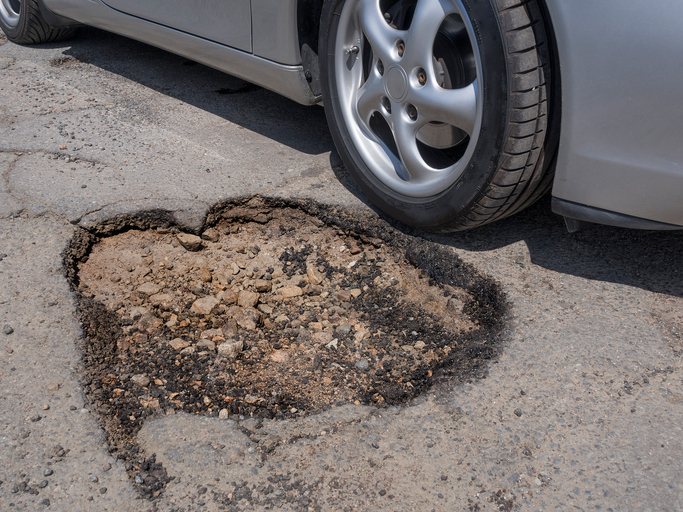April showers might bring May flowers but spring weather, in general, can bring about a whole new set of problems too. Many of them hitting you where it hurts most: your wallet.
Sure, while the weather is a lot nicer, warm spring temperatures help melt away any excess snow and reveal the damage caused by long and icy winters. Not to mention the floods and hail that typically come with the season.
Fortunately, if you’re aware of the common seasonal risks, you can plan accordingly and check to see if you’re covered.
Potholes
Potholes are holes in the pavement caused by the presence of water in the underlying soil structure. Water under the soil structure can weaken the pavement and, as cars and trucks pass over these weak spots, cause the material to become cracked or break down from the weight thus creating a hole. With spring showers to come, the probability of potholes grows. And while dodging them left and right is possible, it’s certainly not the safest way to drive. In addition, hitting potholes can result in the misalignment of your wheels and can affect your steering.
Flooding
What’s Spring without a little rain? Mix a couple of thunderstorms with any leftover melting snow and you’ve got yourself a recipe for flooding. Flooding can affect the structure of your home, your belongings, and even your family if not taken care of properly.
Hail
Springtime hail storms can do a lot of damage to both homes and cars. This damage, of course, depending on the size of the hail. Unfortunately, it’s never easy to tell what size will fall so it’s important to know if you’re covered. Hail can easily damage roof shingles and sidings, windows and more.
Ice Dams
When snow or rain falls, melts and refreezes on a roof, ice shingles can form a sort of dam that causes snowmelt or rainwater to back up. These backups can result in water leaking into your home and ruining your walls and other surfaces. Makes sure to check your roof to ensure you don’t have any dams.
Cracked Concrete
When facing a snowy winter, the use of salt or sand to melt away any snow is common. However, when the snow has melted away, you may find unsightly cracks in your driveway. While this is more of a wear-and-tear issue, if you’re one to worry about your curb appeal, this is a problem that you’ll likely face once it’s warmer out.
Spring brings a lot of great things: longer days, warmer weather, and lots of colors. A great break from a dreary and gray winter. However, if not prepared, the new season can also be a whole new headache. Call an Amigo Insurance agent today and learn how we can help make this spring and easy one.
Signed,
Amigo Insurance



